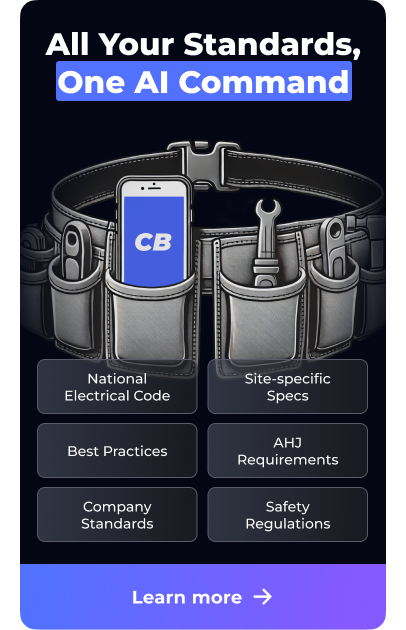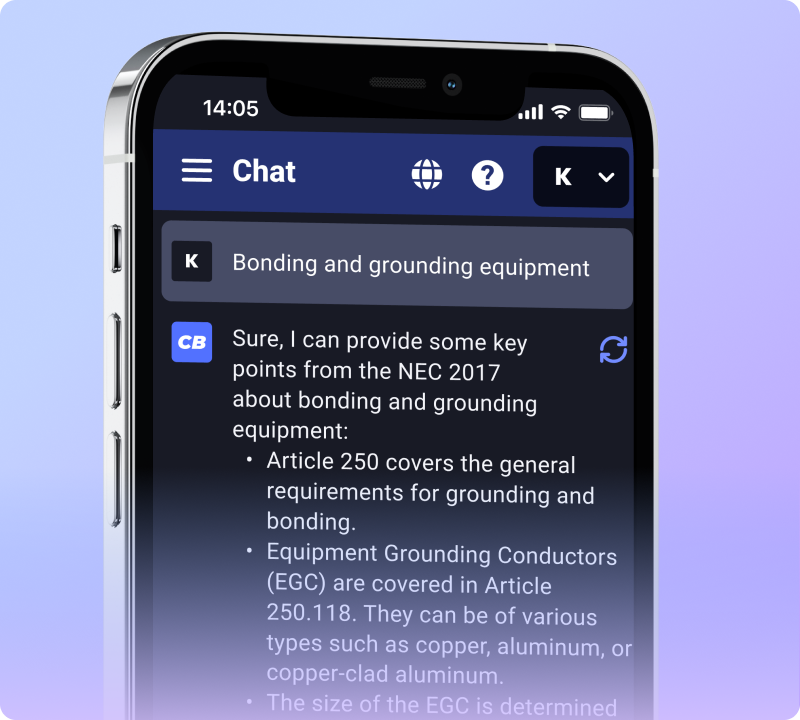Are you puzzled by the term “single phase” in electrical engineering? Single-phase power is a common way to deliver electric energy, especially in homes. This article breaks down what single phase means, helping you understand its role and importance.
Keep reading to learn more!
Key Takeaways
- Single-phase power uses one AC waveform and is ideal for residential settings with lower energy demands. It offers easier installation and maintenance, making it cost-effective for small appliances and less demanding tasks.
- Three-phase power involves three AC waveforms offset by 120 degrees, providing a continuous energy flow that’s more efficient for industrial applications with high energy demands. This system supports heavy machinery due to its higher power capacity and reliable performance.
- Choosing between single-phase and three-phase power depends on several factors such as the type of equipment used, reliability needs, costs, and the expertise required for installation and troubleshooting. Each has distinct advantages but serves different applications efficiently based on their unique characteristics.
Understanding Single-Phase and Three-Phase Power
Single-phase power supplies electrical energy through a single alternating current (AC) circuit. In contrast, three-phase power distributes power using three AC circuits, which offers increased efficiency and is commonly used in industrial settings.
Definition of Single-Phase Power
Single-phase power consists of a single alternating current (AC) waveform. It delivers electrical energy through two conductors: a hot wire and a neutral wire. This type of power usually serves residential environments.
Electric motors in homes often run on single-phase power.
Single-phase systems are simpler to install than three-phase systems. They work well for small loads like lighting and appliances. These systems provide enough energy for basic needs without overcomplicating the wiring process.
Many electricians prefer single-phase circuits for straightforward tasks due to their ease of troubleshooting and lower installation costs.
Definition of Three-Phase Power
Three-phase power consists of three separate electrical currents. Each phase operates at the same frequency but is offset by 120 degrees from one another. This arrangement allows for a continuous delivery of energy, making it more efficient than single-phase systems.
Electric power flows steadily in three-phase supply, reducing voltage fluctuations.
Three-phase power suits heavy industrial applications where high energy demand exists. Many large motors and generators operate on this system because they can handle increased loads effectively.
Lower transmission costs further enhance its appeal for businesses with significant electricity usage. Understanding three-phase configurations helps electricians choose the best solutions for their needs in electrical engineering projects.
Difference in Configuration and Usage
Single-phase and three-phase power differ significantly in their configuration and usage. Single-phase power uses one alternating current (AC) waveform. It connects to a single transformer for distribution.
This setup works well for homes and small equipment that need less power.
In contrast, three-phase power consists of three AC waveforms. These waveforms are offset by 120 degrees from each other, creating a smoother flow of electricity. Three-phase systems provide higher power capacity and efficiency.
They are ideal for heavy industrial machines that require consistent energy supply. Electricians often choose the type based on application needs, costs, and reliability factors in electrical circuits.
Advantages and Disadvantages of Single-Phase Power
Single-phase power offers several benefits for small tools and appliances. It also presents challenges, such as limited capacity and higher chances of power interruptions.
Advantages:
Single-phase power offers several advantages for electricians. It works well with small equipment, making it ideal for residential and light commercial use. Lower installation costs appeal to many users.
Single-phase motors also tend to be cheaper than their three-phase counterparts. Wiring and troubleshooting are generally easier in single-phase systems, which saves time on installations.
Limited power capacity remains a consideration, but the benefits often outweigh this downside for smaller applications. Electricians appreciate its simplicity and lower upfront costs when working with less demanding tasks.
Overall, single-phase power serves as an efficient option in specific scenarios where heavy loads are not required.
Ideal for small equipment
Single-phase power works well for small equipment. It delivers enough electrical power for devices like lights, fans, and home appliances. Electricians often prefer this type of supply because it costs less to install.
Wiring single-phase systems takes less time and requires simpler components.
Many small motors use single-phase circuits efficiently. These motors are generally cheaper than three-phase options. This makes them a favorite choice for residential or light commercial setups.
Electricians can troubleshoot these systems with ease due to their straightforward design. Understanding these benefits helps when deciding on the best configuration for your needs in electrical engineering.
Next, we will explore the advantages and disadvantages of both single-phase and three-phase power systems.
Lower installation costs
Single-phase power systems often have lower installation costs. Electricians find they need fewer materials and less labor to set up these systems. The wiring for single-phase circuits is simpler than that for three-phase configurations.
This simplicity reduces expenses in both time and money.
Many small pieces of equipment operate efficiently on single-phase power supply. By using this type of system, businesses can save significantly on initial setup costs. Electrical preferences lean towards single-phase when budgets are tight.
Lower installation costs make it an attractive option for smaller operations or residential settings.
Single-phase motors are generally cheaper
Lower installation costs often make single-phase motors a popular choice. These motors usually require less complex equipment, leading to lower overall expenses. Electricians find them easier to install and troubleshoot.
This simplicity also contributes to their affordability in the market.
Single-phase motors suit small appliances and light machinery, perfect for residential use. They offer a reliable solution without the high price tag of three-phase systems. As electricians know, cost-effectiveness plays a significant role in decision-making for power circuits.
Easier to wire and troubleshoot
Single-phase power systems simplify wiring tasks. Electricians find these systems easier to install and repair. Fewer wires mean less confusion during the installation process. This setup allows for faster troubleshooting when issues arise.
Many electricians prefer single-phase motors due to their straightforward design. These motors often require basic knowledge of current flow and phase angle, making repairs smoother.
For smaller machinery, single-phase configurations work effectively without the need for complex arrangements found in three-phase systems.
Disadvantages:
Single-phase power comes with some clear drawbacks. Its limited power capacity restricts usage, especially in larger applications. This type of supply often struggles to handle heavy loads efficiently.
Power interruption is another issue that arises more frequently with single-phase systems. Electricians face challenges when troubleshooting these interruptions since the equipment can be less reliable than three-phase options.
Electricians should weigh the disadvantages against advantages to make informed decisions about their projects and equipment choices. Understanding both configurations helps you select the best power system for specific needs, whether it’s single-phase or three-phase power.
Limited power capacity
Single-phase power has a limited power capacity. It typically serves smaller loads, like homes and small businesses. Most single-phase systems can deliver up to 5,000 watts efficiently.
This restriction makes them unsuitable for heavy machinery or industrial processes.
Electricians often face challenges with single-phase setups in larger applications. They cannot support high-demand equipment without risking outages or inefficiencies. Electricians should assess their needs carefully when choosing between single-phase and three-phase systems.
Understanding these limitations helps ensure reliable performance in electrical engineering projects.
More prone to power interruptions
Limited power capacity can lead to more problems. Single-phase power systems often face interruptions during high demand or faults in the system. These interruptions can disrupt operations, especially in critical tasks.
Electricians may find that single-phase setups have less redundancy than three-phase systems.
Frequent outages can impact equipment performance and efficiency. Many small machines operate on single-phase power, but they depend on stable electricity. Taking precautions is essential to minimize disruptions with this type of supply.
Understanding these limitations helps electricians choose the right setup for their projects and clients’ needs.
Less efficient for heavy loads
Single-phase power struggles to handle heavy loads efficiently. It delivers lower power capacity compared to three-phase systems. This makes it less suitable for large machinery and high-demand applications.
Electricians often face issues like voltage drop under heavy load conditions. Such inefficiencies can lead to overheating and potential damage to equipment.
Three-phase power offers a more reliable solution for industrial use. Its higher capacity ensures smoother operation of heavy machines, reducing the risk of interruptions or failures in performance.
Advantages and Disadvantages of Three-Phase Power
Three-phase power offers higher efficiency and reliability for industrial applications, but it also requires more complex wiring and specialized knowledge. Explore the full picture to understand how this impacts your choices in electrical engineering.
Higher power capacity
Three-phase power offers higher power capacity compared to single-phase systems. It delivers consistent energy through three wires, creating a balanced load. This setup allows for the efficient operation of larger motors and heavy machinery.
Businesses often use three-phase systems in industrial settings where they need to support significant mechanical energy demands.
Electrical installations benefit from this increased capacity. Lower voltage drop and better efficiency make three-phase power suitable for demanding applications. Electricians recognize that three-phase configurations can handle more equipment without overloading circuits.
This characteristic is vital for industries relying on high-demand tools and machines, ensuring reliable performance during operations.
More efficient and reliable
Three-phase power stands out for its efficiency and reliability. It delivers a consistent flow of electricity, minimizing fluctuations. This steady supply benefits both equipment performance and longevity.
Electric motors operating on three-phase power run smoother. Their design reduces vibration and wear over time. Higher power factor values also mean better energy use; this translates to lower utility bills for businesses.
Reliable electrical systems support industrial operations effectively, ensuring productivity remains high with fewer interruptions.
Lower transmission costs
Three-phase power systems lower transmission costs significantly. They transmit electricity more efficiently over long distances. This efficiency reduces energy loss during transit, saving money on utility bills.
Use three-phase connections to minimize the materials needed for wiring and infrastructure. Electricians often find that these savings make a big difference in industrial settings.
Single phase power tends to incur higher transmission costs compared to three-phase systems. These increased costs can arise from the need for larger wires and components, especially when handling heavy loads.
For electricians, understanding this aspect of power distribution is crucial when planning installations or upgrades.
Suitable for heavy industrial use
Heavy industries benefit greatly from three-phase power. This type of power supply can deliver more energy than single-phase systems. Factories often require large machines that run continuously.
These machines need a stable and higher voltage to operate efficiently.
Three-phase power ensures consistent delivery, reducing the chance of interruptions during operation. It works well with heavy loads like motors and generators. Industries also save money on transmission costs since they experience less energy wastage compared to single-phase systems.
Overall, three-phase power meets the demanding needs of industrial settings effectively.
More complex wiring and equipment
Three-phase power systems use more complex wiring than single-phase systems. Electricians often face challenges in installation and maintenance. They need to manage three wires instead of one, creating a higher demand for skilled labor.
Equipment designed for three-phase power can also be intricate and requires careful handling.
Understanding this complexity helps electricians plan better. Many industrial machines operate on three-phase power due to its efficiency. Choosing the right equipment is crucial, especially when dealing with heavy loads or sensitive applications.
Single phase does not offer these complexities but may fall short in performance compared to its three-phase counterpart.
Higher installation costs
Higher installation costs often come with three-phase power systems. This complexity leads to more expensive wiring and equipment. Installing a three-phase system requires additional materials and labor, which increases overall expenses.
Electricians must account for these higher costs when deciding on the best power supply solution.
This investment can pay off in the long run due to increased efficiency and reliability. Larger installations may justify these higher upfront costs better than smaller setups can.
Understanding your specific needs will help you choose wisely between single-phase and three-phase options.
Requires specialized knowledge for troubleshooting
Troubleshooting three-phase systems requires specialized knowledge. Electricians must understand the complexities of this power type. They need skills in analyzing electrical circuits and recognizing issues quickly.
Expertise helps identify faults that could shut down machinery.
Common problems include phase imbalances and harmonic distortions. Electricians must know how to test each phase effectively. Using proper tools ensures safety and accuracy during diagnostics.
This specialized skill set sets apart experienced electricians from beginners working with single-phase systems.
Conclusion: Which is Better?
Choosing the right power supply involves looking at various factors. Each option offers distinct benefits and challenges that suit different needs.
Factors to Consider:
Power requirements significantly influence your choice between single-phase and three-phase systems. Single-phase power works well for small equipment and residential use, while three-phase power suits industrial applications that need higher capacity.
Costs also play a key role. If budget constraints exist, single-phase options typically have lower installation costs.
Reliability matters in electrical engineering too. Single-phase systems can suffer from interruptions more often than their three-phase counterparts. Assessing the types of equipment you will run is crucial as well.
Three-phase motors tend to handle heavy loads better and operate more efficiently than single-phase ones. Understanding these factors helps electricians make informed decisions about what does single phase mean in electrical engineering for their specific needs.
Power requirements
Power requirements play a crucial role in choosing between single-phase and three-phase systems. Single-phase power suits small equipment that demands less electricity. Many residential setups operate on single-phase power, making it an attractive choice for homeowners.
In contrast, heavy machinery needs more energy. Three-phase power delivers higher capacity and efficiency for industrial applications. Electrical professionals often recommend analyzing the specific load to determine which system fits best.
Understanding your equipment’s demands helps ensure reliable performance without unnecessary interruptions.
Types of equipment
Single-phase power works well for light commercial and residential equipment. This includes small appliances, lights, and HVAC systems. Electricians often choose single-phase motors for their lower costs and easier installation.
These motors operate efficiently at low power levels.
Three-phase power suits larger industrial machines and heavy equipment. Equipment like pumps, compressors, and large conveyor systems require more energy to function effectively. Electricians must consider the types of equipment when selecting between single-phase and three-phase options.
Your choice will depend on the specific demands of your operations or projects in electrical engineering.
Costs
Cost factors play a vital role in choosing between single-phase and three-phase power. Single-phase systems typically require lower installation costs. Electricians often find wiring simpler and less time-consuming for smaller setups.
This simplicity leads to savings on labor expenses.
On the other hand, three-phase power tends to have higher installation costs due to its complex wiring and equipment needs. These systems provide greater efficiency for large applications, which can offset initial expenses over time.
Ultimately, understanding these cost differences helps electricians make informed decisions based on their clients’ specific requirements.
Reliability
Reliability plays a significant role in choosing between single-phase and three-phase power. Single-phase systems deliver power consistently for smaller loads. They are great for homes and light commercial applications.
Yet, they often face interruptions during peak usage times. Three-phase systems provide a steady supply of electricity, even under heavy loads. They minimize the risk of outages, making them ideal for industrial settings.
Electrical professionals favor three-phase power when reliability is critical. Heavy machinery requires uninterrupted service to operate efficiently. In contrast, single-phase may fall short in these scenarios due to its limited capacity.
Understanding these differences helps electricians make informed choices about their projects and client needs in electrical engineering.
Expertise
Expertise plays a vital role in choosing between single-phase and three-phase power supplies. Electricians often require specialized knowledge to install and maintain these systems effectively.
Understanding the nuances of each type ensures proper operation for different applications.
Single-phase power typically suits residential settings, while three-phase power works best in industrial environments. Each system has unique wiring needs. Electricians must know how to troubleshoot issues efficiently to keep operations running smoothly.
This expertise helps determine which configuration meets customer demands best.
Choosing the Right Power Supply for Your Needs
Choosing the right power supply plays a crucial role in electrical engineering. Single-phase power suits small equipment well. It offers lower installation costs and simpler wiring options.
Electricians should also consider three-phase power for heavy industrial use. This option provides higher efficiency and capacity.
Evaluate your specific needs carefully. Think about the types of equipment you plan to use. Analyze both costs and reliability as key factors in your decision-making process. Each setting requires its own solution to meet demands effectively.
Understanding these aspects will guide you toward finding the best choice for your projects, whether single phase or three-phase power is more suitable for your setup.





